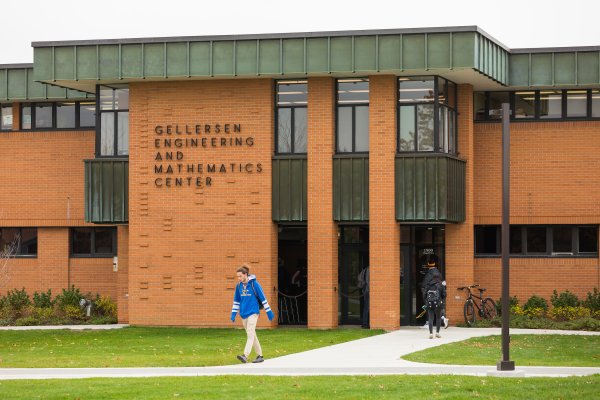Exploring Options, Ahead of the Game
Valpo gave Chris Hazard ’01 the freedom to discover new approaches to solving difficult problems.
Choosing Valpo was a wise strategic move that continues to yield benefits years later, says Chris, the founder and CEO of Hazardous Software.
Chris earned acclaim in the world of computer gaming when his game, Achron, which allows virtual time travel, won the 2011 Best Original Game Mechanic award from Gamespot.
Achron was the first real-time strategy game that added time manipulation to the player’s arsenal. Now Chris and his company are building on Achron’s game engine, Resequence, to bring time manipulation to serious gaming, an approach to simulation that is used to solve real-world problems.
“We’re taking a lot of lessons from the gaming industry about making software fun and easy to use,” Chris says, “and applying them to problems that face industrial and government organizations.”
Serious gaming has a long history in the military, and it has been used extensively in areas such as emergency management, health care, city planning, engineering, and politics. Time manipulation, which allows multiple participants to go back in time to re-evaluate critical decisions and see their consequences unfold, offers an especially potent tool for exploring options before committing to positions that involve unwelcome risk.
Chris’s clients are various: the U.S. military has relied on his expertise, but Resequence has also helped develop corporate strategies for a wide range of industries.
“One thing I love about my work is its diversity,” Chris says. “I have the opportunity to work across many industries and take a shot at the most challenging problems. Risk modeling and uncertainty modeling are useful in many arenas.”
Chris’s omnivorous mind was nourished at Valpo, where, he says, “the professors were willing to engage with me in a variety of research avenues. When I found a topic that I wanted to explore, there was always somebody who said, ‘Hey, let’s do an independent study’ or ‘Here’s some resources to look at that issue,’ so it gave me a very broad understanding of many domains.
“I never felt constrained by the faculty at Valpo — never felt as if they were saying, ‘This is the way you have to learn.’ They were very flexible in engaging in all these wild ideas and projects I had,” he says.
Among the “wild ideas and projects” Chris recalls from his years at Valpo:
- An image-manipulation tool that used physics and materials science to allow the user to paint various surfaces onto a virtual object
- A quantum-computing project that explored new ways of laying out the logic on a microchip, simulating circuits to assess their performance
- His senior project: designing a programming language for parallel computing, creating a platform for it, and then testing it on a group of computers assembled from a storage closet
- An artificial-life project (that is, simulating the development of life by creating virtual entities that generate very complex systems when operating under a few simple rules). Chris’s project produced “gliders” — moving patterns that are bounded in size — that reproduced when they collided with one another. This experiment, which produced the first known self-reproducing gliders, was ultimately published as a paper in the academic journal Complexity; it also won the Valparaiso University Board of Directors’ Independent Research Award.
Chris worked in industry for several years after graduating from Valpo and eventually returned to the academic world to earn a Ph.D. in computer science at North Carolina State University, because, as he says, “I tend to think that the most interesting problems are the ones that haven’t been solved yet.”
He’s grateful to Valpo for giving him a first taste of the freedom to explore, fostering his ability to make bold advances and approach difficult problems with a fresh perspective.
